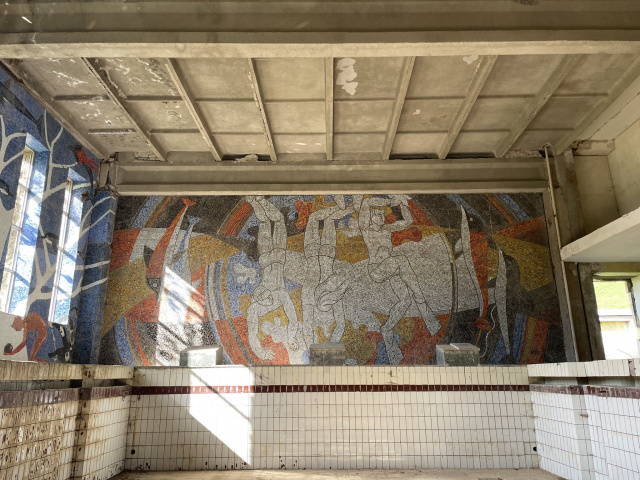Monumental art played a major role in Soviet
architecture. It was not only meant to serve aesthetic purposes and
"break" the coldness of faceless modernist or Soviet typology-based
architecture, but primarily it served as a means of ideological propaganda.
Monumental art objects - bas-reliefs, mosaics and, especially, frescoes - were
meant to constantly and everywhere remind the Soviet citizen of the fundaments
and the essence of his Soviet existence: the importance of work, the
achievements of science, the conquest of space. All this, of course, was
presented in national-historical packaging. Alongside the praise of
modern-proletarian achievements and realities, there are quotations from
national history and culture. The houses of culture, pioneer palaces and camps
in every village and city, which themselves were meant to disseminate official
soviet beliefs and ideologies among the Soviet proletarian society through arts
and culture, were decorated with symbolic (iconic) images of "legitimate"
national great historical and cultural actors and episodes from the past of
Armenian culture and history.
Monumental art
Data Type
Encyclopedia
Frescoes "The Past and the Present of Bjni" in the palace of culture in Bjni
Henrik Siravyan, 1975














